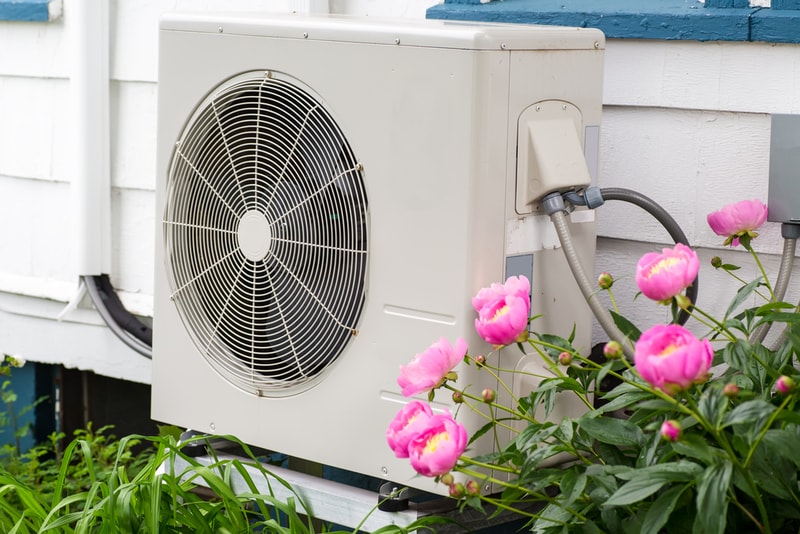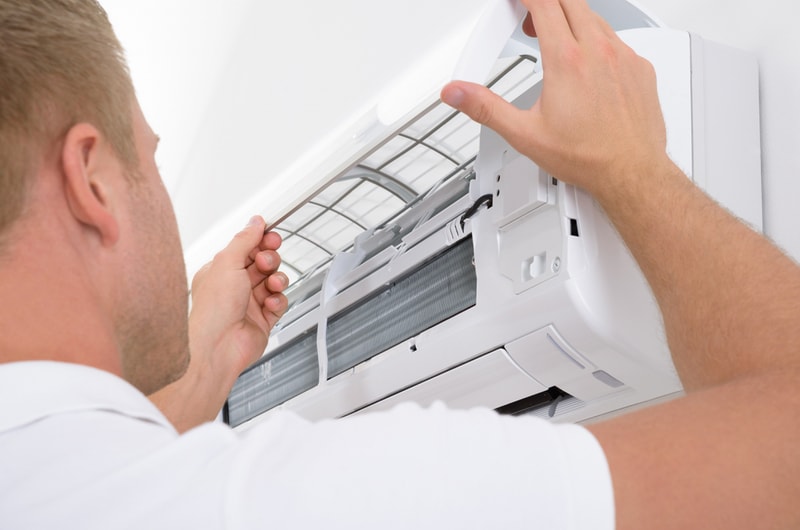When you’re having an HVAC unit installed, there are a lot of terms that you may not know before, and while the contractor can help you understand the differences, it’s best that you do your own research too, to make sure you get the system that is right for you.
Doing your own research will help you ensure you can understand the catalog you might have received from your local home improvement store.
If you’re an average homeowner, there’s a chance you don’t know the difference between forced-air and central-air systems. To find out the difference, all you need to do is continue reading.
We’re sure you’ll be surprised by the result, as many are.
What is a Forced-Air Heating System?
You’re not alone when asking the questions “what is a forced-air heating system” or “what is the difference between a heat pump and forced-air”, which we hear quite commonly. We’ve been asked those questions a lot of times before.
When people talk about a forced-air system, they’re generally referring to a system that heats the air. In fact it is anything that heats air, which includes both a heat pump as well as a furnace. While a boiler can also deliver heat to your home, it does not do it through ducts and vents, which is the definition of a forced-air system. Hydronic coils, electric heaters and natural gas systems can also be used as forced-air.
Heat pump advantages and disadvantages

There are different advantages and disadvantages of heat pumps for you to be aware of. As the name implies, they use a pump to get the house to the different parts of the house through the vents and ducts. Through the use of a compressor and the vent system, outside air has its heat extracted from it which is then pumped into the home.
When the weather gets better, it’s possible to reverse the process and use it to cool your home instead, and they can get up to 300% efficiency, which may seem impossible but is due to the definition used. Because a lot of the energy of such a system is coming from an energy source that would otherwise not be used, electricity is the “valuable” energy, which doesn’t actually mean it produces more than 100% efficiency, just that certain sources are not considered.
A 300% efficiency would also be referred to as a COP of 3, or a coefficient of performance of 3.
If they are installed and used properly, they can be an efficient source of heating and cooling.
An advantage of a heat hump is also that it’s comparatively cheaper when the alternative is a combustion based system, they also have very little maintenance, although they will need to be checked periodically. They are also very safe options and your carbon footprint will be lower compared to alternatives.
If you get a good system installed, they can last 40-50 years, but they generally last around 15.
If you truly want to cut your carbon emission, you need to use solar generated energy to run this system. Otherwise, they still run on electricity which often generates a carbon footprint in its production.
Read our guide on saving electricity at home.

Photo from Green Match
The picture above refers to a Renewable Heat Incentive, which is relevant in the UK, but not in the US, also known as RHI.
One of the disadvantages is the initial investment you will need to put into the system, as it’s both expensive and difficult to install. Prior to installing it, the contractor will need to study your home and determine the best design.
When air needs to be moved with a heat pump, it’s done with a liquid or gas refrigerant, which is why “questionable sustainability” is written on the image. You should therefore look into whether you can use biodegradable fluids for your system, if your wish is to be green.
They are, however, an energy-efficient alternative if you only need moderate air conditioning needs.
The heat pump comes in different types. One type of heat pump uses air to extract heat out of, although there are also ones that use water or geothermal energy. There are even hybrid systems that use geothermal energy as well as air, and other combinations depending on the needs of the region you live in.
They also come installed in different ways, such as ductless ones, that then obviously don’t use the ducts and vents in your home.’
Furnace advantages and disadvantages

As opposed to the heat pump, furnaces are used in areas with harsher winters. Before you need to make a decision, it is important that you consider whether there are serious heating needs in the months of November through February, because you don’t want to be stuck with a system that cannot handle the work.
When you get a furnace installed, you know that it has the capacity to heat your home, no matter how cold it is outside, and that is a very big advantage if you’re in the middle of a snow storm. Even without the duct work, the furnace is cheaper than a heat pump, but the cost of the fuel that it requires could add up over time and make it a more expensive option.
A limitation that exists with furnaces comes down to the fuel type available to you. There are different fuel types that may all seem great on the surface, until you discover they’re not available in your area. The most common types are gasoline, electricity, propane and solar energy. First you need to make sure the type of fuel you want is available in your area, and then you also need to consider the general costs of that type of fuel, since there will be a lot of difference depending on your choice. Propane, for example, is a lot more expensive than a lot of alternatives.
You should also check the efficiency rating of the system you’re about to buy, since their efficiency ratings vary greatly among different models.
Hydronic Heating System Advantages and Disadvantages
Hydronic heating is also what people commonly refer to as radiant heating, which basically runs a liquid through tubes in the floor or radiators. There are three main types of these system that include: Baseboards, radiant floors and hydro-air heating.
Hydro-air heating will pump warm water to a heat exchanger in which the air is heated before this is sent out through ducts and vents in your home.
Radiant floors work by having warm water pass underneath the floor you walk on, and the warm air is therefore not distributed through ducts and vents. This is done underneath tile or wooden floors, making it nice and warm to walk on, and occasionally on concrete too. With radiant floors, it’s important to remember that the heat from the water passes through the tubes, up through the floors, and you will therefore need a type of floor which the heat can pass through.

Central Air Conditioning Systems
When someone says a central-air conditioning system, instead of a forced-air system, what they mean is in fact a system that provides cooling. While it’s a semantic question, central-air simply refers to cooling, while forced-air is used when someone talks about a system that heats.
Besides the systems mentioned above, there are other types of systems that provide central-air, these include split systems, packaged central air conditioners and ductless mini-split systems.
Split Systems Advantages and Disadvantages
These are popular in-home systems in the US, where they’re stored away in a cabinet, or at least part of it. The evaporator coil, the part that absorbs heat from the air in your house, is put inside the cabinet, while the condenser coil is kept outside the house. This part releases the transferred heat, whereby your house is kept nice and cool. It will use the ducts to transfer the heat, and your other system that provides warm air for the house will use the same ducts, obviously the season and temperature outside will determine which system is currently doing the work.
These systems have the advantage that you don’t need to make a big hole in the wall and install something that is visually displeasing. It’s also a versatile system, that does not require the outside part to be immediately up against the house, however you should remember that the efficiency decreases with the amount of ducts the air needs to pass through.
This system is also more quiet than a window AC unit, because the two working parts are split up.
If you live in a tall building, this system may however not be available to you, as there’s no place to put the outside part, and it’s not as cheap as a window unit either.
Ductless Mini-split Systems Advantages and Disadvantages

Compared to the normal window unit, the ductless mini-split system has the advantage that it does not obstruct your view the same way. They cost more to initially have installed, but they’ll save you money on your monthly bills due to their increased efficiency compared to window units. With this system, you’re also better able to hide the outside counterpart and make it less noticeable.
They’re also known to be relatively quiet, at least if you choose the right model.